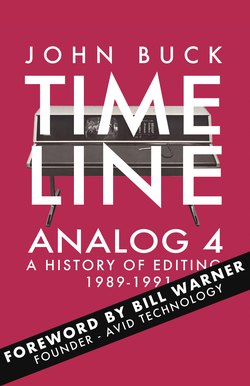Читать книгу Timeline Analog 4 - John Buck - Страница 12
На сайте Литреса книга снята с продажи.
RAWLEY AND FERSTER
ОглавлениеAnother key person in Avid's future was contemplating change. Curt Rawley had worked for several Massachusetts based computer companies like DEC and Pixel Computers but thought it was time to start his own venture. Unsure as to where he might start Rawley canvassed industry people for their opinions.
I was working as a consultant to keep bread on the table and was working through product ideas to put on a computer. I wanted to know if I should use a workstation or one of the emerging PCs
He spoke with Roy Moffa who had worked at senior levels in DuPont, Apollo Computer and alongside him at Digital Equipment Corporation. Moffa told him of a former colleague from Apollo who had quit his job to get funding for a PC based business venture.
He suggested that they meet each other. It was now just a matter of time before Curt Rawley met Bill Warner.
Without sufficient funding to progress the Avid system Warner decided to heed the advice from the MIT Start Up Forum and he made the most important phone call of his life.
I called Bill Kaiser at Greylock and said “You said to call you, so I'm calling you. I think I need some money, I need half a million dollars!”
At almost the same time Bill Ferster spoke with Pansophic's president David Eskra about potential investors for his start-up, The Editing Machines Corporation. Venture capital firm Greylock Partners in Boston had taken Pansophic to an IPO and Pansophic had subsequently acquired Ferster’s West End Film.
Unknown to both men Greylock was talking to Bill Warner about nonlinear editing. Bill Kaiser recalls:
When smart people with the same backgrounds and similar knowledge start looking at a problem, they will come up with independent solutions within weeks of each other. As I was contemplating Avid, my assistant told me that there was a guy called Bill Ferster on the phone from Washington. Then when we started talking he told me that he had invented a nonlinear video editing system that worked on a standard PC! Pretty remarkable.
Kaiser advised Ferster that they were already considering another start-up in the same field and that it was a problem to go any further. Kaiser is still amazed to this day:
Who knows what would have happened if Bill Ferster had called me before Bill Warner?
Despite Greylock’s rejection Ferster realised that his main requirement for outside help was in sales and marketing. He organised for Pansophic to market the EMC product once it shipped. Ferster recalls:
You can't underestimate the value of the support from Jim Treleaven, Pansophic's General Manager for Graphics. He helped co-ordinate the office space and sales team for the new venture.
John Schwan had seen Ferster's business plan as his advocate within Pansophic.
We had a large sales team and it would be that group who would sell the EMC product when it was complete.
Ferster enlisted the support of friend Charles (Chuck) Rieger.
Bill Ferster and I had known each other for quite some time prior to our collaboration on the EMC editor, so the foundations were based on our mutual friendship and high degree of professional respect we shared for each other. My academic and professional background had been a mixture of AI and hardware and software design, while Bill's talents lay squarely in software design and architecture, with particular attention to user interface design
Ferster recalls:
The idea was to try and build a specialised appliance based on the PC like my previous product Cameraman but this was pre-Windows. We had to build our own graphical user interface.
Rieger continues:
Although my previous business partner and I had stopped further development on our SCION SoundSpace 32-track audio prototype it was still up and running, with a real-time UI that permitted multitrack recording and editing via up to 32 x 30MB SCSI disks running in parallel, each supervised by its own 80186-based controller card, represented as one of the tracks in the visual UI.
So the SoundSpace was the starting point for the EMC collaboration, since most of what SoundSpace did was almost identical to EMC's needs, i.e. managing real-time data streams to and from a hard disk in a scripted environment.
The collaboration proved to be a natural fit between Rieger’s hardware and embedded software knowledge and Ferster's vision for a nonlinear system. Soon after Editing Machines Corporation rented an 1889 former mansion in the Dupont Circle section of Washington D.C. Ferster recalls:
We developed the concept and the idea based on hard drives because it was easier but we always felt that the removable optical media was an important part of the equation. We knew people wanted to be able to transport their media around.
Ferster set a goal to create a system for the SMPTE show in October 1988.
